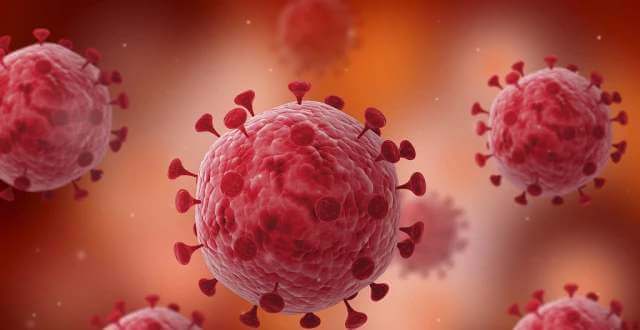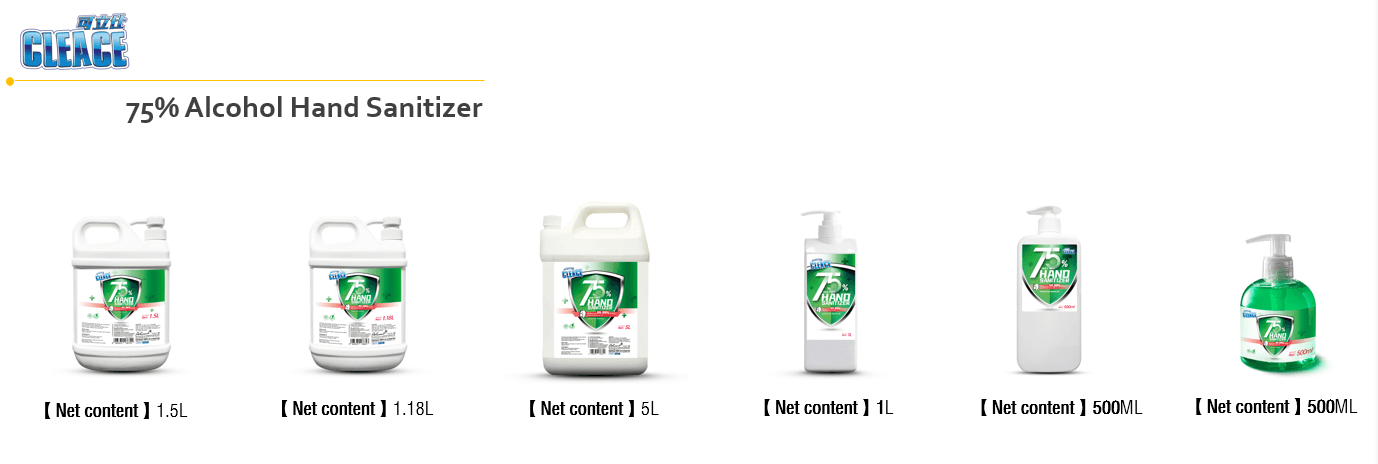1. What is a new coronavirus?
The prevalent coronavirus is a newly discovered coronavirus. Coronavirus is a large virus family that is known to cause colds and more serious diseases such as the Middle East Respiratory Syndrome (MERS) and Severe Acute Respiratory Syndrome (SARS). The new coronavirus is a new coronavirus strain that has never been found in humans before.
It was discovered in 2019 due to Wuhan Viral Pneumonia cases, and the International Virus Classification Commission named it SARS-Cov-2. The population is generally susceptible because the population lacks immunity to the new virus strains.
2. What causes new coronavirus pneumonia?
Caused by the SARS-Cov-2 coronavirus, WHO names the disease caused by SARS-Cov-2 infection as COVID-19, and most of these infections can cause pneumonia, which is called new coronavirus pneumonia / neocronary pneumonia.
At present, first new cases have been transmitted from Wuhan Seafood Market. The original source of infection was considered to be wild animals, possibly Chinese chrysanthemum bats. So far, according to the "Pneumonitis Diagnosis and Treatment Program for New Coronavirus Infection (Trial Version 6)", the source of infection is mainly patients with new coronavirus pneumonia. Asymptomatic patients can also be referred to as the source of infection.
3. How pathogenic is coronavirus?
Coronavirus mainly infects adults or older children, causing common colds and sore throats, and some strains can also cause diarrhea in adults. The virus is transmitted by droplets, and the fecal-oral route can also transmit. Mainly popular in winter and spring. The average incubation period of the virus is 7 to 14 days.
Compared with SARS, the new coronavirus pneumonia in Wuhan, China currently appears to be less pathogenic, but the possibility of virus mutation is not ruled out.

4. What is the difference between the new coronavirus and SARS virus?
The new coronavirus, SARS virus, and MERS virus belong to the large family of coronaviruses. They are "Siblings", the genetic sequences have many similarities, but they are not exactly the same. The infectivity compared with SARS has yet to be determined, and the fatality rate is currently lower than SARS, but the possibility of virus mutation is not ruled out.
5. Which wild animals carry coronavirus?
Many wild animals can carry pathogens and become a source of transmission. Civets, bats, bamboo rats, and tadpoles are common hosts of coronaviruses.
It is speculated that the natural host of the new coronavirus in Wuhan, China, may be bats, but how it is transmitted from bats to humans and what the intermediary is is unclear.
For the sake of safety, we should never eat foods such as wild animals and raw food that are not quarantined, such as raw meat on the roadside, a taste of risk is not advised.
6. Is human-to-human transmission possible ?
Yes. Based on current evidence, it can be determined that the new coronavirus can be transmitted from person to person. The new type of coronavirus is mainly transmitted by droplets and contact. Relatively long-term exposure to high concentrations of aerosols in a closed environment may cause aerosol transmission. As new coronaviruses can be isolated in feces and urine, attention should be paid to environmental aerosol or contact transmission caused by feces and urine.

7. What is R0? What is the R0 of the new coronavirus?
R0, pronounced R naught in English, is a shorthand for basic reproductive number. The basic infection number is also translated as "basic propagation number", "basic reproduction number", and "basic propagation coefficient".
R0 is an epidemiological term that refers to the average number of individuals an infected person can infect during this period of infection without external intervention and without immunity from all people.
It can be seen that R0 is mainly used to measure the infectious capacity and transmission efficiency of a certain pathogen. The higher the R0, the stronger the infectivity of the pathogen. such as:
R0 of measles virus is 12-18;
R0 of HIV is 2 ~ 5;
R0 of SARS is 2 ~ 5.
The R0 of the new coronavirus is 2 to 3 (there is no conclusion yet, the latest research thinks it is 3.77).
8. Will R0 change with the development of the epidemic?
It will not. R0 is a value calculated in the early stage of the epidemic without any intervention measures and the population being not immune, to reflect the inherent infectious capacity and transmission efficiency of the pathogen. The coefficient that will vary with the epidemic is Rt.
When external force is involved (such as effective isolation measures taken) and the population is immune (such as patients who have recovered after illness will gain short-term immunity, effective preventive drugs, successful vaccine development, etc.), the transmission of the pathogen coefficient ( In epidemiology, the "effective reproduction number (RT)" will decrease.
Whether the epidemic can be controlled depends on whether the effective transmission number Rt can be continuously less than 1.

9. Are the convalescent and discharged patients contagious? Will one continue to be infected after being discharged?
Qiu Haibo, deputy dean of Zhongda Hospital Affiliated to Southeast University of China: Patients during rehabilitation and discharge passed two negative nucleic acid tests and no virus was replicated. At the same time, the body can produce antibodies to defend itself against new coronavirus infections. Although the antibodies are not life-long, they are less likely to get the new coronavirus in six months or longer. Patients with new coronary pneumonia are still at risk of transmitting the virus after they are discharged from the hospital, requiring 14 days of continued health monitoring and medical observation.
10. Can people with asymptomatic infections also spread new coronary pneumonia?
Asymptomatic infection is weak in transmission, but it needs to be promptly controlled.
Li Xingwang, Chief Expert, Infectious Diseases Diagnosis and Research Center, Ditan Hospital, Beijing, China: Asymptomatic infection does not have obvious clinical manifestations, but a throat swab test and nucleic acid test are positive. Asymptomatic infections are relatively mild and the amount of virus is relatively small, so their ability to spread may be weaker.
11. Who is susceptible to the new coronavirus?
The pppulation is generally susceptible. New coronavirus pneumonia can occur in people with low immune function and normal immune function, which is related to the amount of virus exposure. If you are exposed to a large amount of virus at one time, you may get sick even if your immune function is normal. For people with poor immune function, such as the elderly, pregnant women or people with liver and kidney dysfunction, the disease progression may be relatively faster, and the severity may be higher.
Whether it is infected or not depends mainly on the chance of contact, not that people with higher immunity will not get infected. The best way to protect yourself and your family from the new coronavirus is to avoid contact with anyone who is infected. If it comes into contact with a patient, it may be infectious, whether it is a person with strong immunity or a person with poor immunity. Children are less likely to be exposed and have a lower chance of infection; for the same exposure, older people, people with chronic diseases, and people with poor immunity may be more likely to be infected.
12. What are the new coronaviruses afraid of?
Most of the knowledge about the physical and chemical properties of coronavirus comes from the research on SARS-CoV and MRRS-CoV. The virus is sensitive to ultraviolet rays and heat. It can kill the virus in 30 minutes at 56 Celsius; Chlorine-containing disinfectants, alcohol, iodine, peroxides and other disinfectants can also effectively inactivate the virus.
Authoritative database UPTODATE states that several bactericidal / disinfection solutions commonly used in hospitals and homes, including parachlormetaxylenol, Benzalkonium chloride and cetrimonium bromide / Chlorhexidine have been shown to be ineffective against the new coronavirus. When buying disinfectants, it is not recommended to buy these three ingredients.
13. Why is 14-day medical observation needed for close contacts?
The incubation period of new coronavirus pneumonia is 1 to 14 days, mostly 3 to 7 days.
Referring to the incubation period of diseases caused by other coronaviruses, the new coronary pneumonia case will set the medical observation period for close contacts to 14 days, and conduct home medical observation for close contacts. After 14 days, the person can then be judged uninfected if he does not show any symptoms.
14. Can latency period be examined medically?
The incubation period can be detected by nucleic acid in patient samples, which can detect new coronavirus infection.
15. Will cured crowd continue to get sick (infected)?
Coronaviruses are single-stranded RNA viruses that are susceptible to mutation, making it difficult for them to develop sustained immunity. For example, the flu virus that circulates every year requires the latest vaccination, also because the virus type often changes, patients with new coronary pneumonia are still at risk of transmitting the virus after being discharged from the hospital, 14 days of continued health monitoring and medical observation is required.